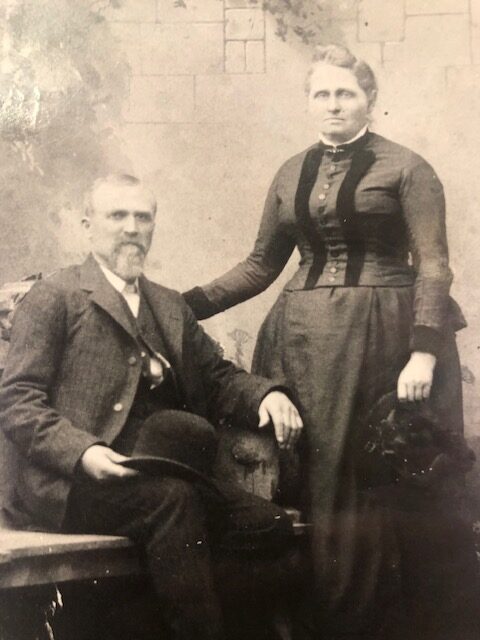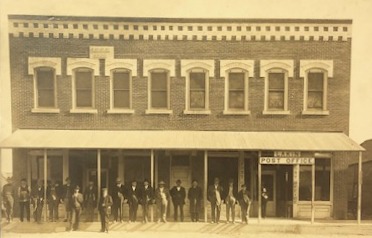William Barringer Logan was living in Missouri and enlisted in the Lyon Home Guard when the Civil War broke out. General Nathaniel Lyon had created the Home Guard in the summer of 1861 to defend innocent civilians in their home regions from guerrillas and pro-South Missourians. Home Guard enlistees were armed by the Union government, but only 10,000 of the estimated 15,000 actually received weapons. They had no uniforms and received no pay unless on active duty. William B. Logan took part in various skirmishes with rebels during his service with the Home Guard.
In February of 1862, Logan enlisted in Company B of the 6th Missouri Cavalry. This regiment was sent on campaigns to Fort Smith and Fort Gibson and through Indian Territory and Arkansas. After capturing Fort Smith, the regiment then went into Eastern Missouri around Cape Girardeau to prevent General Sterling Price from reaching St. Louis. They assisted in turning the confederates on this invasion up the Missouri River and followed closely after them to Kansas City where Price’s army again turned south. They continued to fight him into Arkansas.
Logan served until the end of the Civil War and was mustered out with the rank of captain. He returned to his farm in Clinton County, MO, but even after the war, hard circumstances beset the farmers in Missouri for many years. Captain Logan was called upon again to fight guerrillas. He organized a band of loyal men to put an end to Ol’ Sheppard and his gang, Missourians who fled to the rugged backcountry and forests to live in hiding and resist the Union occupation of the border counties. These bushwhackers fought Union patrols, typically by ambush, in countless small skirmishes and hit-and-run engagements, but Logan’s group opened the way for permanent peace in that locality.
In 1886, Captain Logan moved to Kansas with his wife, Hannah, and his children, Calvin, Minnie and Kate. Eldest son, William Monroe, had arrived in Kearny County six months earlier. William B. Logan’s years had enabled him to accumulate some possessions and capital so that he did not come to Kansas as poor as many other early settlers. He shipped a carload of goods containing among other things two spans of mules and two cows, household utensils, and about a year’s provisions. He brought with him $1,200 and filed on a homestead in the northern part of the county. There he erected a 34×20-foot soddie with nine-foot ceilings and a 16×16 sod kitchen. All was plastered inside, and a coat of stucco was put on the outside front which gave the Logans the warmest, coolest and roomiest of pioneer homes.
According to A Standard History of Kansas and Kansans, Capt. Logan cut the first crop of wheat and the first crop of rye in the north end of Kearny County. He kept his table supplied with roasting ears, melons and other foods that he grew in his garden. The year 1888 was very dry and with general economic conditions deeply depressed, settlers had very little financial backing and left in large numbers. Nearly all the other settlers had left the school district by the time Logan had proved up on his claim, so he exchanged his homestead for a timber claim relinquishment one and a half miles northwest of Deerfield. He proved that up and continued to be identified with farming in Kearny County and with cattle ranching. When the Garden City Sugar Company acquired title for the site of Lake McKinney which included Captain Logan’s tree claim, he purchased a homestead west of Lakin and moved his family there.
Logan was appointed probate judge by Governor John Martin in 1888, serving out an unexpired term. He was then twice elected to this post. In 1903, he ran again and filled the office for another two terms. His principal duties were looking after the filing and proofs of claims, issuing marriage licenses and performing wedding ceremonies. He also served a stint as editor of The Advocate in 1890. After leaving the office of probate judge, Logan devoted himself to the real estate and insurance business, continuing in that work until failing eyesight forced him into retirement.
The building known as the Logan-Otto building was completed in 1908 on the east side of Main Street, Lakin. Logan moved his insurance and real estate business into the north side of the building in June, and the post office moved into Charles Otto’s side in August. Eventually, Logan’s son Will moved his Arkansas Valley Seed House into the back of the building. There was a common stairway between Logan’s side of the building and Otto’s. The upstairs of both buildings were used for social events and as lodges for such groups as the Odd Fellows, Rebekahs, and Knights and Ladies of Security.
Captain Logan was very influential in local politics and served as chairman of the Republican Central Committee in Kearny County for many years. He joined the Presbyterian Church and almost continuously held the office of elder, and he and his wife were regular attendees at Sunday School as long as they were physically able. William served as a school board member, director for the Kearny County Bank, and held membership and offices in other organizations such as the Odd Fellows, Grand Army of the Republic, Sugar Beet Growers of Kearny County, and Masons.
Captain William B. Logan was the last surviving member of the Lakin post of the GAR and was considered one of the most intensely patriotic men in Kearny County. He died at the age of 90 in 1926, and flags were placed at half-mast in recognition of Logan’s service to his country.


SOURCES: “A Standard History of Kansas and Kansans” compiled by William E. Connelley; History of Kearny County Vol. I; National Park Service; Civil War on the Western Border.com; civilwarmo.org; archives of the Advocate and Lakin Independent; and museum archives.
